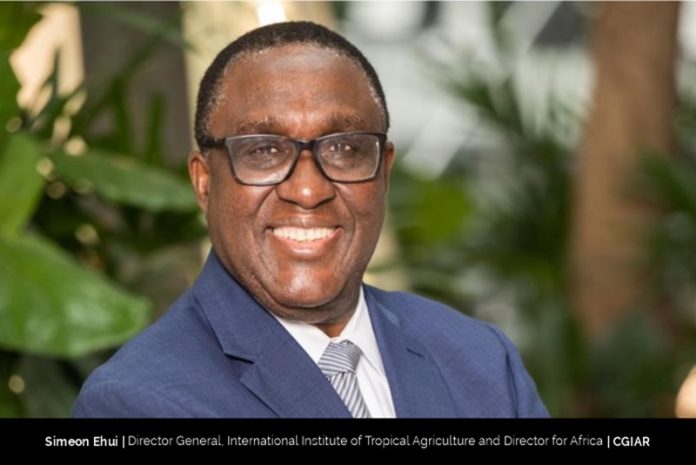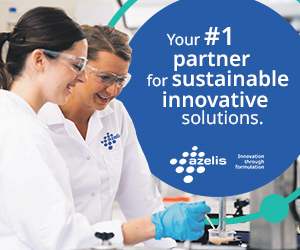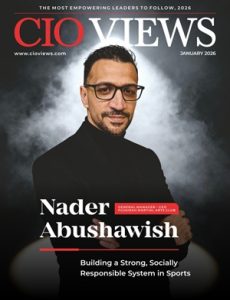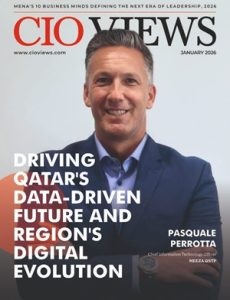Simeon Ehui’s imprint on Africa’s agricultural landscape is indelible. Throughout his long and stellar career, he has led multiple initiatives that have transformed this sector and improved people’s lives. Today, as Director General of the International Institute of Tropical Agriculture and Director for continental Africa at CGIAR, he continues to influence all aspects of agriculture across the continent. He is focused on research and the application of science to address food security challenges, with the aim of impacting people’s lives, especially those of youth and women.
At the level where he stands today, Simeon measures success by the impact he has on the lives of farmers, farming communities, women, and youth. “Being able to positively impact the lives of these people is, for me, the definition of success,” he says.
Simeon feels he has succeeded when he can transform landscapes and food systems while simultaneously improving people’s lives through increased incomes, higher crop yields, and the introduction of improved technologies that enable individuals to better care for their families.
If one had to describe Simeon in a word, it would be “optimist.” It is a key reason for his success, as he never accepts a negative solution. He believes in always looking at the positive side.
Making a Career in the Agriculture Field
After completing his higher secondary education, young Simeon was offered a government scholarship. The grant was intended for studying agronomy at the university level, but he turned it down. “At the time, that was not what I wanted to do,” he recalls. “I wanted to study pure economics.”
Upon graduating with a degree in economics, Simeon was once again awarded a government scholarship from Côte d’Ivoire, along with one from the U.S. Department of Agriculture. This time, the scholarships were for pursuing both a master’s degree and a Ph.D. in the U.S. After completing his English language training, Simeon needed to select a university for his graduate studies, so he sought advice from a former professor.
The professor highlighted that Côte d’Ivoire was primarily an agrarian nation, with agriculture contributing significantly to its GDP at the time. He told Simeon that by specializing in agricultural economics, he could bring added value to his country. This led him to apply to the Department of Agricultural Economics at Purdue University in Indiana (USA), where he was accepted. “So, what I was trying to avoid after high school, I ended up pursuing years later,” Simeon says.
Looking back, Simeon harbors no regrets about his decision to study agricultural economics. He is proud of that because African countries continue to depend on agriculture significantly. He can tap into his education and experience to orient policies and design programs aimed at alleviating poverty in these countries.
Simeon eventually ended up in the agriculture field. “In life, sometimes you never know where you’ll end up,” he says.
Professional Journey: From IITA to IITA
Simeon’s career came full circle when he stepped into the role of Director General at IITA, CGIAR, in August 2023. His journey with the organization began 36 years earlier when he completed a two-year postdoctoral fellowship at IITA, thanks to a Rockefeller Foundation fellowship from 1988 to 1990.
Following his time at IITA, Simeon joined the International Livestock for Africa (ILCA), which merged in 1995 with the International Laboratory for Research on Animal Diseases (ILRAD) to become the International Livestock Research Institute (ILRI), also part of CGIAR, where he spent more than 13 years. “I progressed from the position of economist to head of the policy ANALYSIS program,” Simeon said.
As his interest in seeing the impact of his work on government policies grew, Simeon found himself drawn to the World Bank. Through networking and an application process, he secured an opportunity there. “At the World Bank, I also grew through the ranks, moving from senior economist to lead economist and Sector Leader, then to manager for Agriculture programs in South Asia and Africa, director of agricultural global practice, and regional director for sustainable development for West and Central Africa,” he says.
After nearly two decades at the World Bank, Simeon wasn’t searching for a new job opportunity. He had intended to retire after his tenure and do something else. He is passionate about empowering women and young girls by providing them with opportunities to become self-reliant. However, that plan was put on hold when he was approached to apply for the leadership position at IITA. “I applied, and the board, staff, and management thought I was the best candidate,” Simeon shares.
“And here I am at IITA, where I started 36 years earlier, now serving as the Director General,” he adds. He recently marked his first year in the role. Simeon expresses great satisfaction with the mission he is pushing at IITA.
About CGIAR and IITA
CGIAR is a global research partnership for a food-secure future, while IITA is a research-for-development (R4D) organization providing solutions to hunger, poverty, and natural resource degradation in Africa. The origins of IITA can be traced back to the threat of famine in India in the 1960s.
American agronomist Norman Borlaug had developed high-yielding dwarf maize and wheat varieties at the Mexico-based International Maize and Wheat Improvement Center (CIMMYT). When he introduced these varieties in India, it led to increased food production, ushering in a Green Revolution in the South Asian nation. According to Simeon, “The founders of CIMMYT recognized the importance of establishing similar centers in Africa to avert the looming food crisis, as the continent’s population was rapidly growing. That’s why IITA was set up in 1967.”
Multiple other centers, including ILRI, were also established. This led to the formation of a loose consortium called CGIAR, or Consultative Group on International Agricultural Research, in 1971. Initially, this group’s scope of work was limited to developing high-yielding crop varieties. However, as challenges became more complex, its focus shifted to issues such as natural resource management, environmental concerns, and social problems. “Over time, there was also a decline in the resources received by CGIAR,” Simeon points out. “For its centers, it became a challenge to raise resources.”
Although the World Bank, IFAD, and UNDP contributed to the group during its financial crisis, CGIAR’s founders decided to work together as a true consortium rather than remain loosely independent. It is now led by a global leadership team comprising an executive management director, regional directors, CGIAR’s center directors, and an executive MANAGING director.
“We work harmoniously together to address the question of food and nutrition security in the world,” Simeon says. “We emphasize Africa because that’s where the biggest challenge lies.”
IITA’s focus is also on Africa, even though it has a global mandate. This 2,500-strong institution has five hubs, five regional offices headed by directors, and several research stations in 20 different countries. “We continue to thrive, responding to the challenges and needs of countries by providing the technologies they require to improve the lives of their populations,” Simeon says.
Dealing with Challenges
In a career spanning more than three decades, Simeon has faced numerous challenges, with people management being a significant one. At ILRI, which he joined as an economist, he was asked to manage the economic and policy division on an acting basis due to organizational circumstances. Impressed by his work style, the director of research and director general soon confirmed him as the head of the division.
“I was young and had no leadership experience,” Simeon recalls. “In my team, there were people in their 50s and above, while I was in my early 30s. Managing people at that level was a big challenge for me as I wasn’t fully prepared for it.”
However, he successfully navigated this challenge, gaining valuable experience in people management. In his career, Simeon has also encountered difficulties due to leadership changes, changes in programs, resource scarcity, and fundraising needs. “Engaging and developing partnerships was challenging, but I turned it into opportunities to raise money and resources for projects relevant to our clients and partners,” he says.
When Simeon stepped into a leadership role at the World Bank, he had to manage a large group of people from diverse cultures. He points out that he had to adapt to that, as well as to the World Bank’s working mechanisms, with several bosses, numerous deadlines, and deliverables to meet the organization’s goals.
He recalls a particularly challenging time after moving to Nigeria for the World Bank. Two months after his arrival, the avian flu crisis emerged. As the leader of the agriculture team, Simeon received an urgent assignment – to develop a program to combat avian flu within one or two months. “It was a huge challenge, but my colleagues and I succeeded in developing and implementing it.”
Reflecting on the challenges he faced, Simeon shares: “When you face a challenge, you have to adapt. You sort of ride with the waves. When the waves go up, you go up, and when they come down, you come down, and then you move forward.”
A String of Achievements
Simeon has a string of achievements to his credit. He says, “When you have a career of 35 years, it is difficult to miss achievements.”
During his time at the World Bank, he contributed to several transformative projects in Africa. He is particularly proud of the West Africa Agricultural Productivity Program. Simeon highlights that this was one of the first regional programs funded by the World Bank in West Africa to promote regional cooperation in science and technology. It enabled the development of 200 technologies. “We were able to train more than 1,000 students for their master’s and PhDs, and we also improved the livelihoods of farmers by increasing their yield by 17% to 25%,” Simeon informs.
He also led the Fadama Project, an agricultural development program in Nigeria, which became a national phenomenon. In his own country, Cote d’Ivoire, Simeon helped innovate financing for the cashew sector, transforming it from a raw material provider to a processing industry. He explains that a unique financial system within the World Bank, not being used by people, benefited Côte d’Ivoire greatly.
Earlier, countries like Vietnam and India bought raw nuts from Côte d’Ivoire, processed them, and then exported them to Europe and America. Simeon says that this was unacceptable, especially considering that Côte d’Ivoire is closer to Europe. “Why not process the cashews locally and then export them?”
“This is the kind of change we implemented, and I’m proud to say it’s working well. Managing the program is quite a challenge, but the results have been positive,” he adds.
Dual Roles and Responsibilities
As the Director General at IITA and CGIAR Regional Director for Africa, Simeon has dual responsibilities. In his role as Director General, he focuses on overseeing the institution’s operations, ensuring that staff have the necessary resources, and developing partnerships. “My goal so far has been to diversify the sources of funding for projects at IITA,” Simeon says, “so we can minimize the risk if one source stops financing.”
Beyond securing funding, he also represents the institution at high-level forums, positioning IITA and addressing the needs of various countries. His meeting with the President of Sierra Leone is one such example, where he is set to discuss how IITA can support the development of agriculture.
As the CGIAR Regional Director for Africa, Simeon’s primary focus is on fostering sustained partnerships across the continent. “It’s a busy job and quite challenging, but there are opportunities ahead,” Simeon says.
He credits his supportive family for his success. Simeon’s wife, who also holds a PhD in agricultural economics, shares his busy schedule and, as he points out, understands the challenges he faces. “We also prioritize our family interests. Joint family vacations, spending time together, and sharing experiences are important to us.”
Future Plans and Goals
As an institution, IITA needs to continue establishing its reputation as the premier research and development institute of reference in Africa, according to Simeon. He plans to ensure that the institute remains at a level where it is visible and known, solidifying its position in the space.
“My goal is to ensure that IITA continuously maintains its position, is well funded, and is able to do the research that can be relevant to the needs of our client – countries of Africa,” Simeon says.
He joined the organization on a five-year contract. During his tenure, he intends to fulfill what he signed for with the board and accomplish this mission perfectly. “At the end of this mission, I want to be remembered as the DG who helped IITA to move the extra mile in conducting research and developing innovations that Africa needs, delivering technologies, and helping young women and youth improve their lives,” Simeon says.
Message to Aspiring Leaders
Simeon encourages aspiring leaders to embrace the field of agriculture. He tells them not only to learn about it but also to develop an interest in the latest technologies offered by the field – as it is the era of digitalization. Simeon also advises them to maintain a high level of integrity in the work they’re doing.
“Finally, I encourage them to develop networks, to reach out and broaden their connections, and be self-motivated,” Simeon says.





